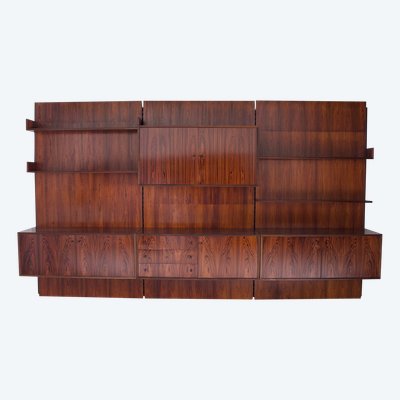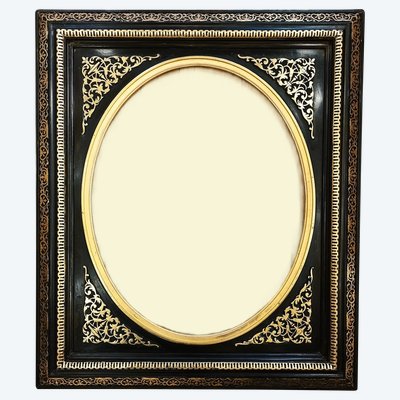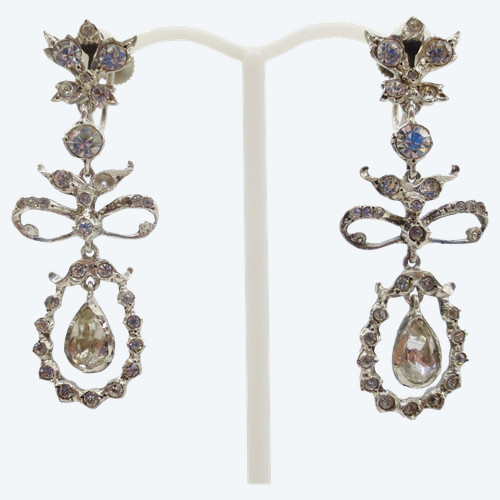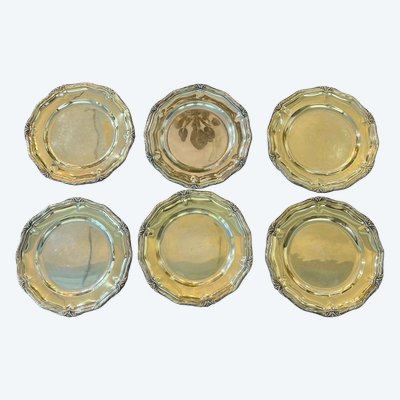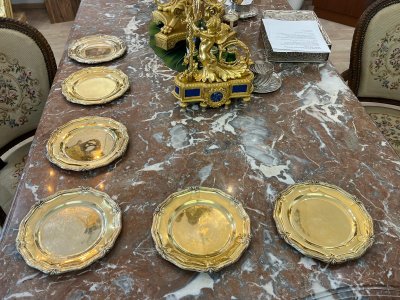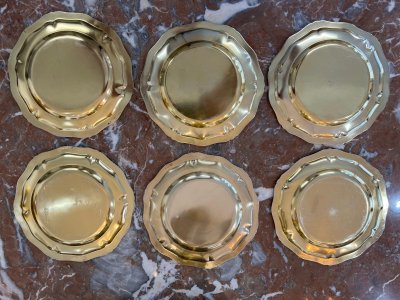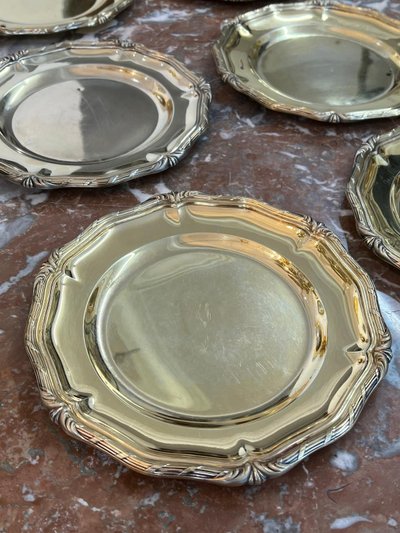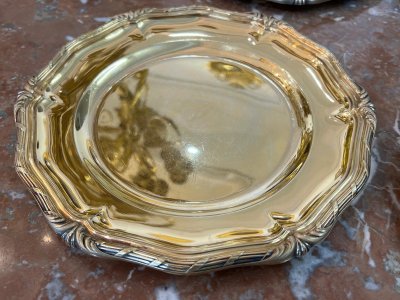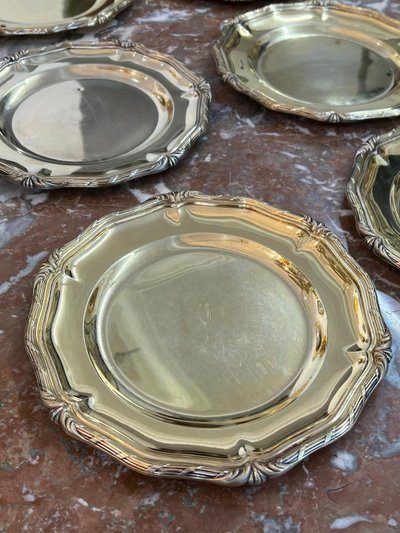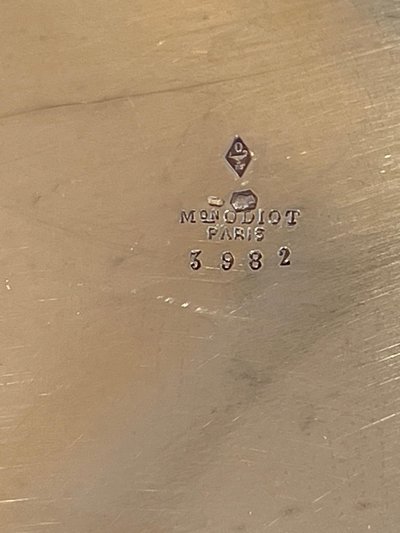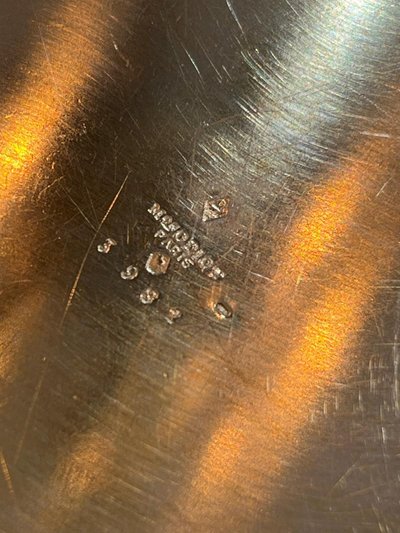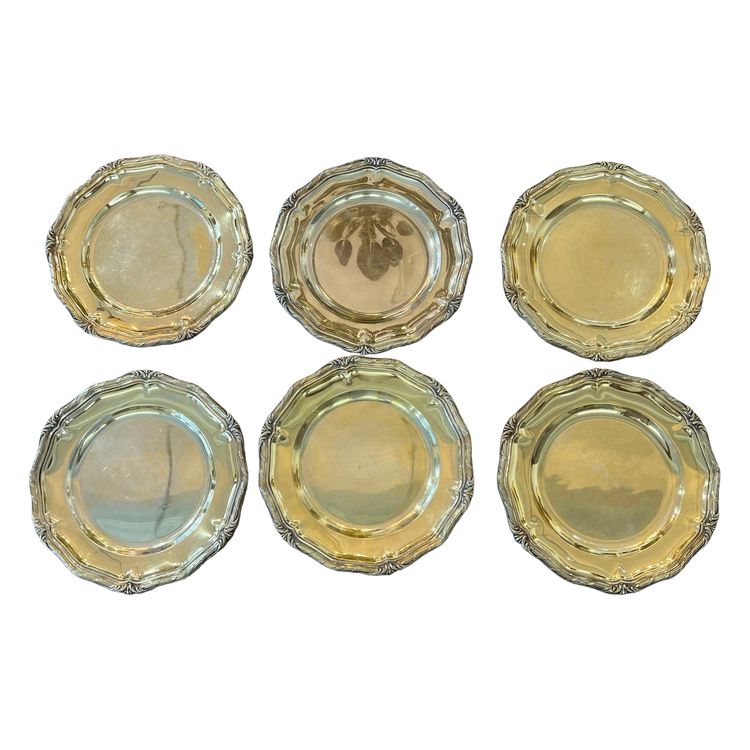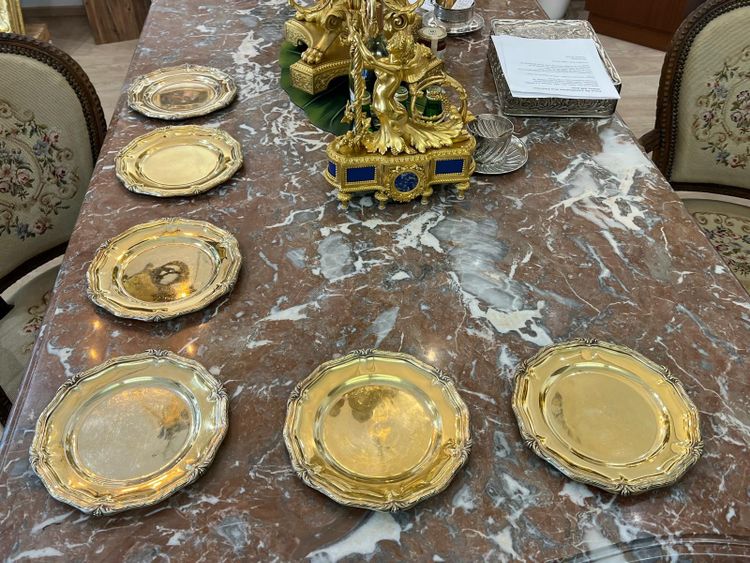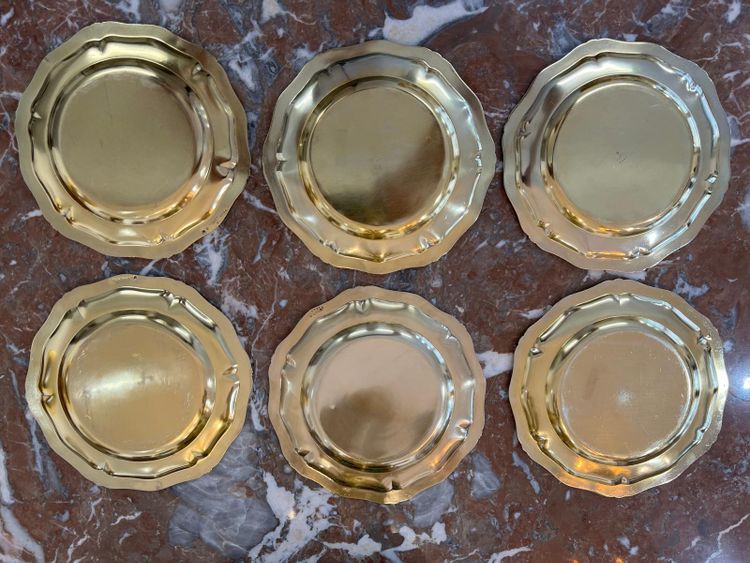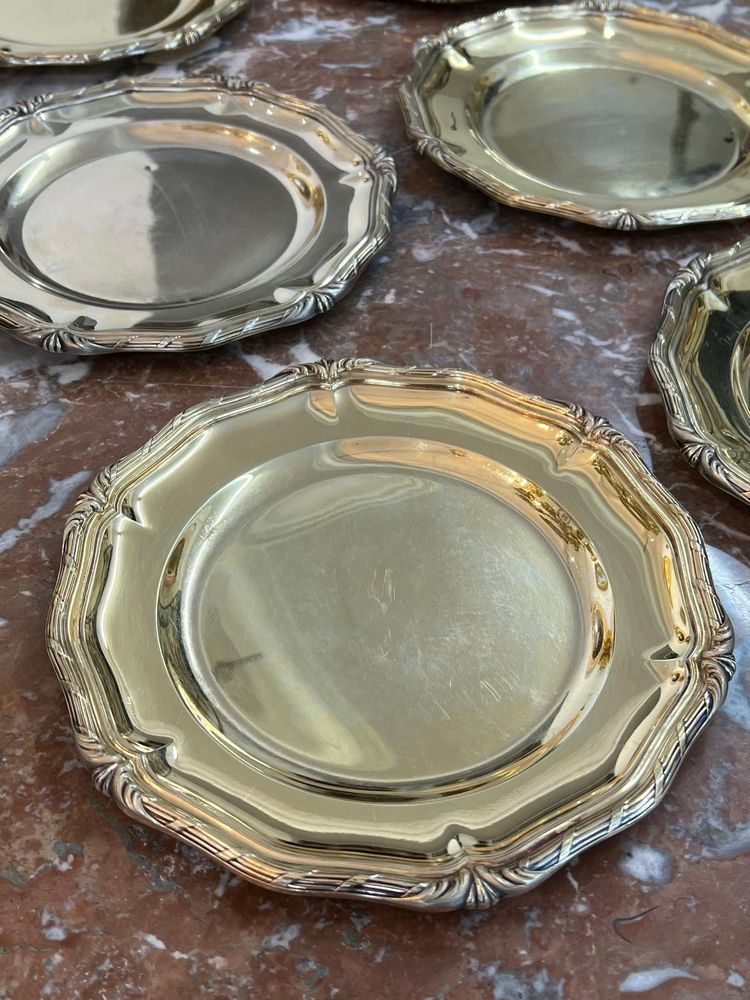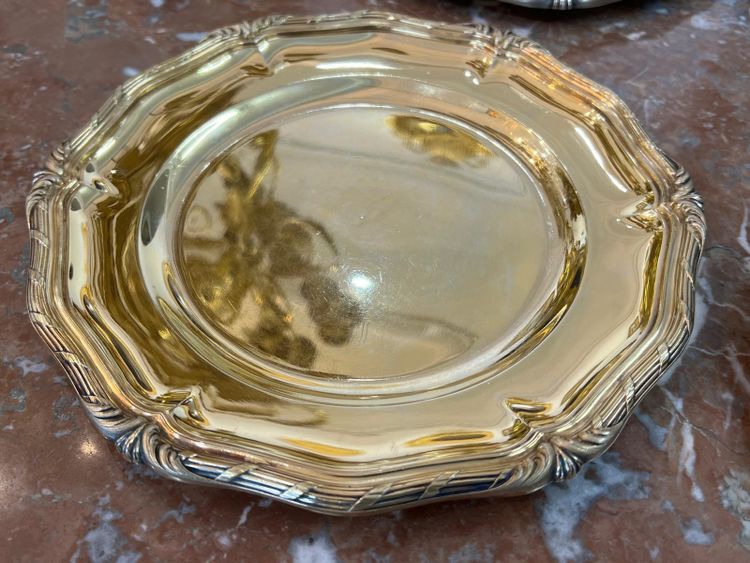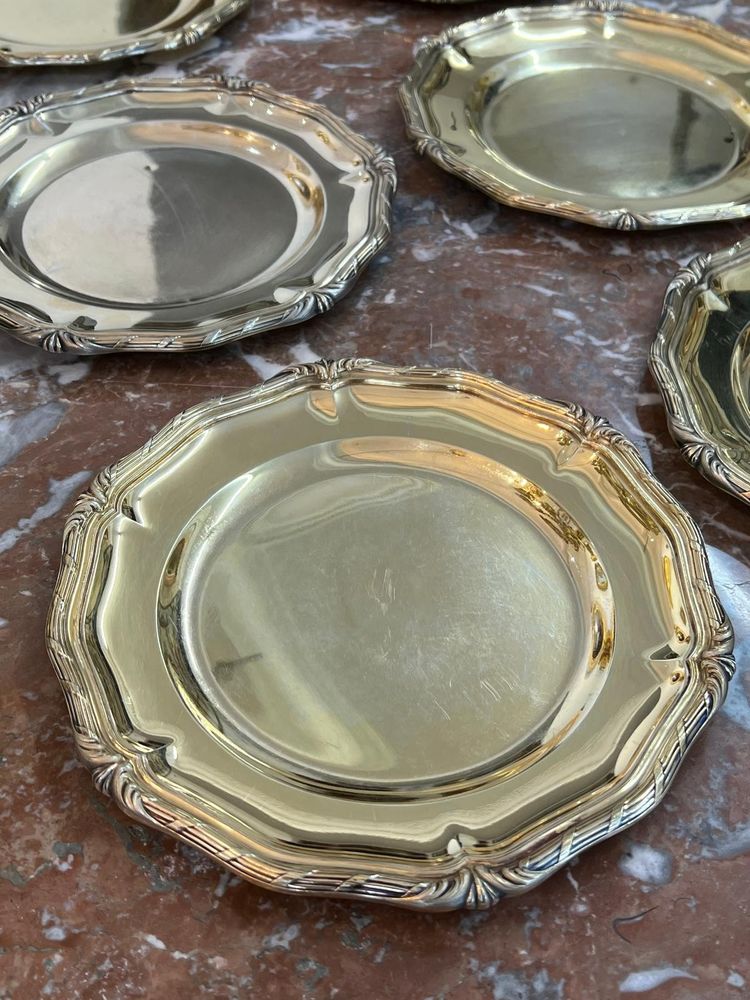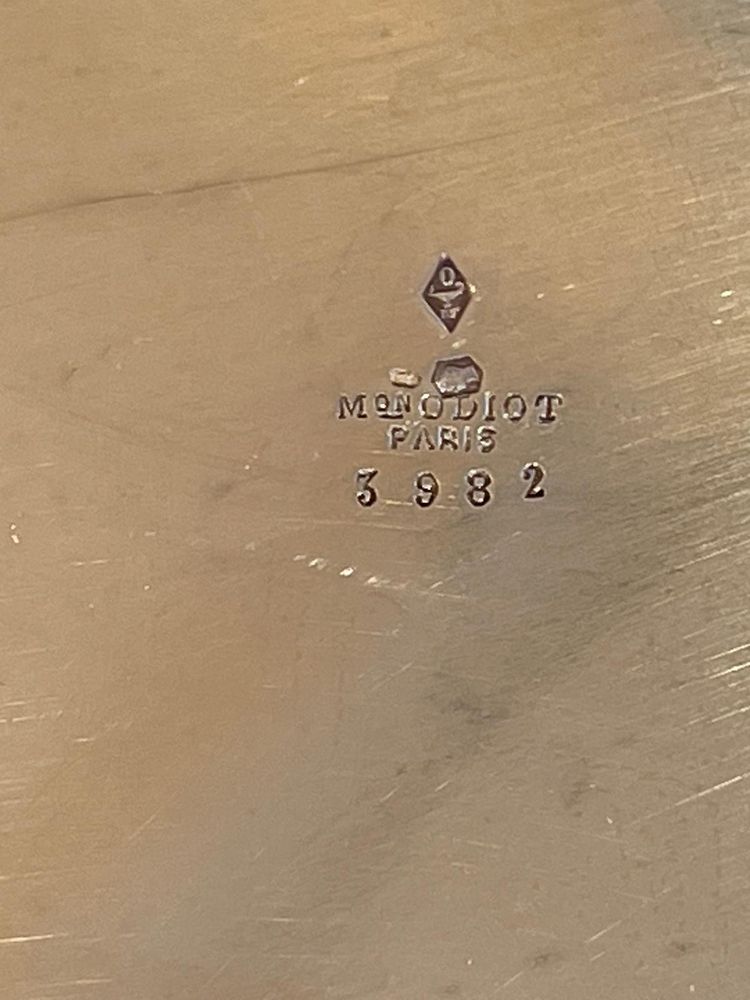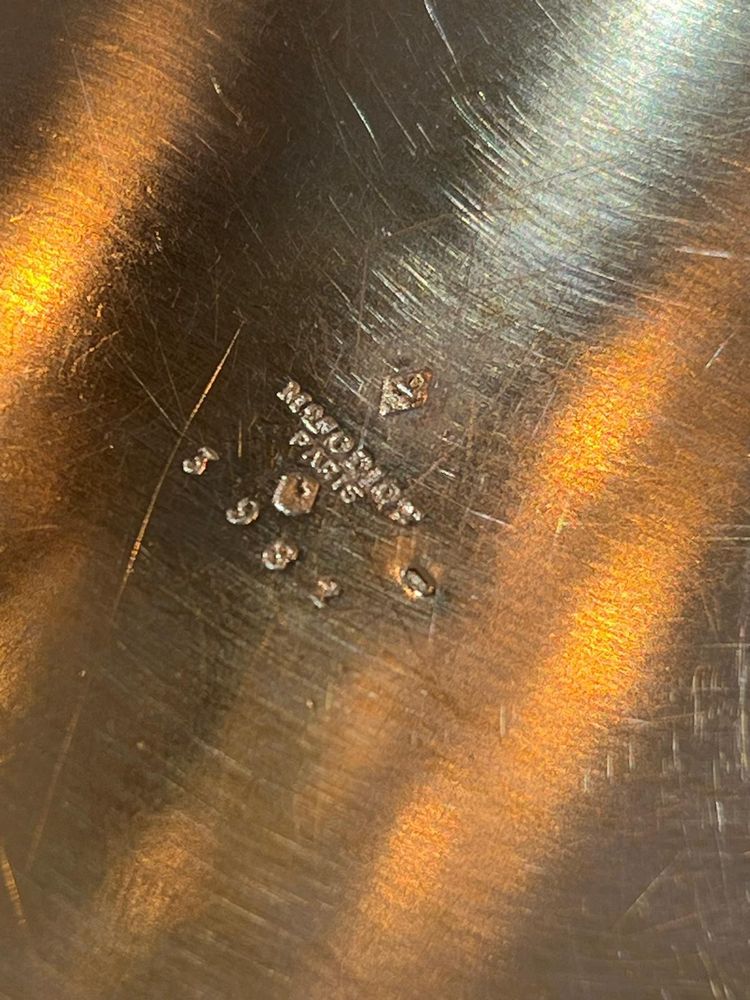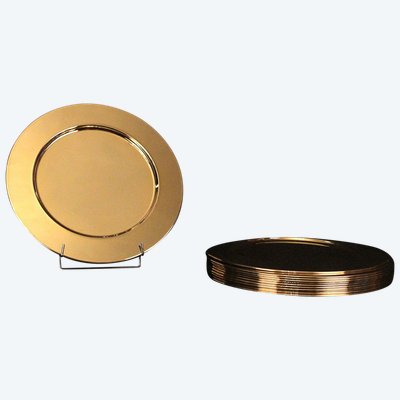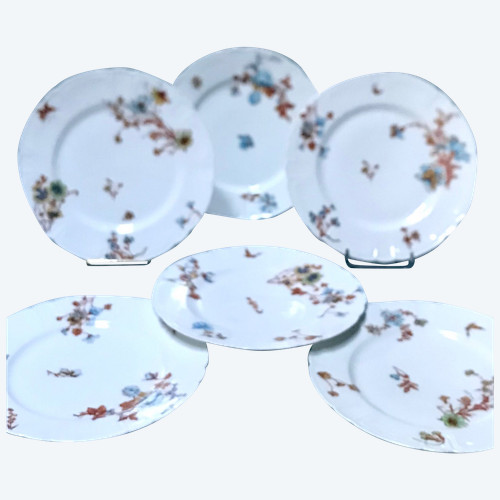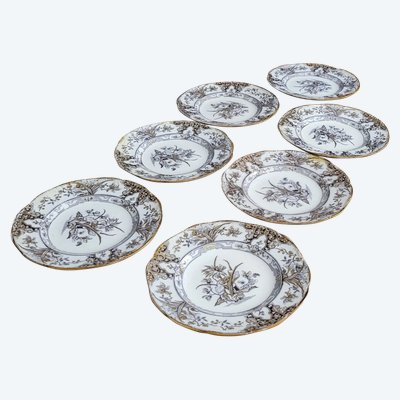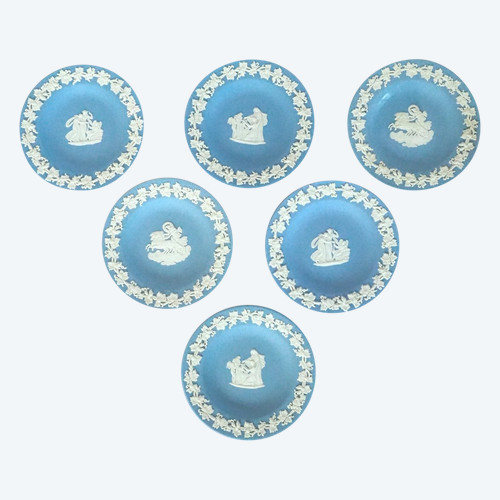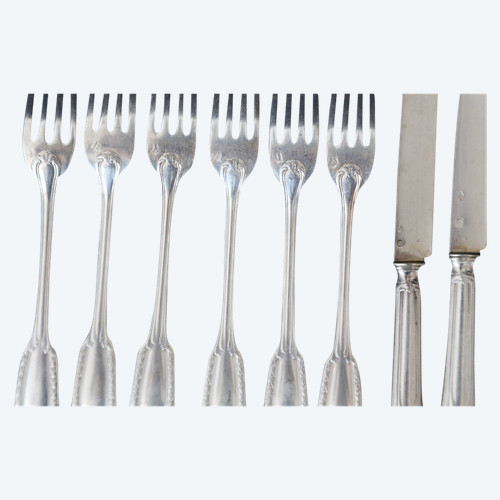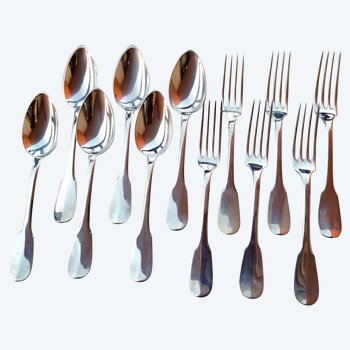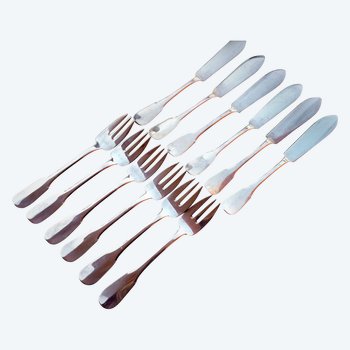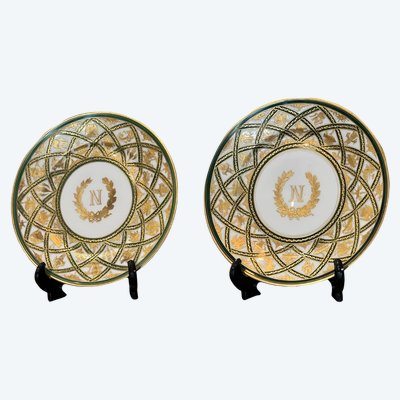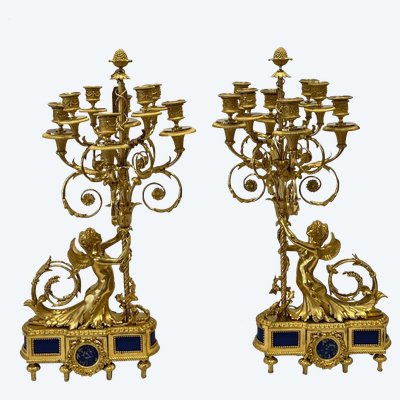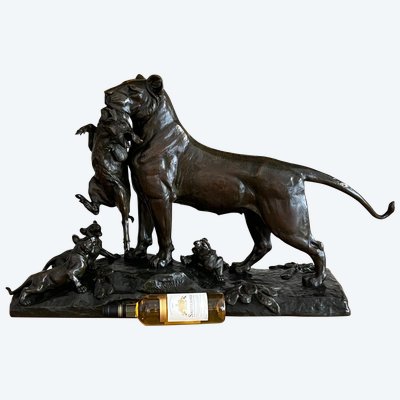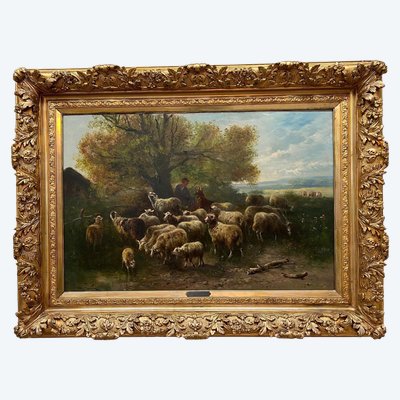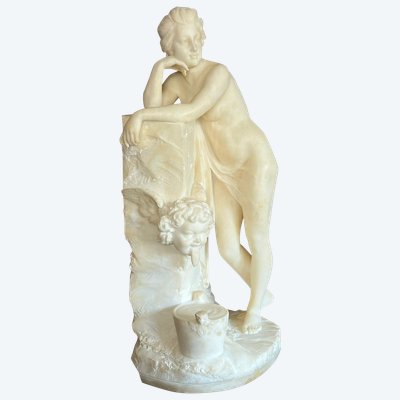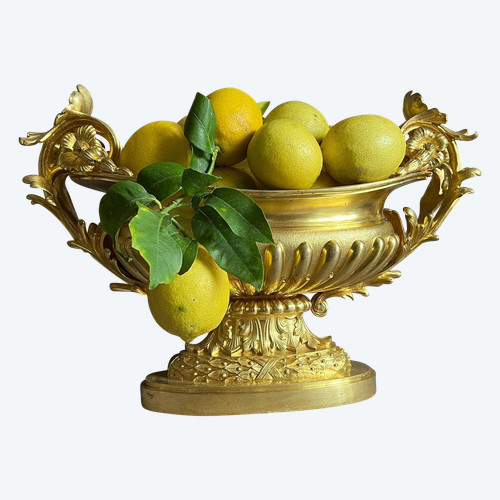This description has been translated and may not be completely accurate. Click here to see the original
Six Silver-Gilt Plates, Jean-Baptiste Gustave Odiot, Paris
Six silver-gilt plates.
Model with six edges bordered by ribboned fillets framing foliage, a very chic and prestigious model by one of the greatest French silversmiths.
Silversmith Jean-Baptiste Gustave Odiot, Paris, before 1894.
Stamped on the back: ODIOT/PARIS/ 3982, 8523, 2734, 2730, 3982, 3982.
In very good condition, minor scratches from use.
Diameter: 24.5 cm.
Weight: 2787 grams.
A renowned French house, famous for its exquisite silver and gold creations, the Odiot family has produced many talented artisans. The story began in 1690, when Jean-Baptiste-Gaspard Odiot was appointed official goldsmith to the royal court and became the personal craftsman to King Louis XV. However, it was Jean-Baptiste-Claude Odiot who truly brought the family name to worldwide renown.
Jean-Baptiste-Claude's connection to Emperor Napoleon Bonaparte and his family is particularly notable. Although he was never officially appointed purveyor to the emperor (a fact that proved advantageous during the Restoration), Odiot took over after the bankruptcy of the previous purveyor, Henri Auguste, in 1809. He created numerous objects for Napoleon, his family, and his close associates.
After Napoleon's fall, the House of Odiot not only maintained its elite clientele but also expanded its influence to include members of the nobility and royalty from across Europe. Prominent clients included Arthur Wellesley, the Duke of Wellington, the Austrian diplomat Prince Clemens von Metternich, and the King Frederick William III of Prussia, King William I of Württemberg, and Prince Regent George IV of England.
Jean-Baptiste-Claude also exhibited his works at two World's Fairs, in 1819 and 1823. Between 1819 and 1835, he generously donated several works to the French government, including 30 bronze objects and a silver vase, exhibited in the Luxembourg Palace (later transferred to the Musée des Arts Décoratifs). It is noteworthy that between 1907 and 1908, another renowned jeweler, Christofle, silver-plated some of the bronze works donated by Odiot.
In 1827, Jean-Baptiste-Claude retired, passing the business to his son, Charles-Nicolas Odiot. Under Charles-Nicolas' direction, the company became the purveyor to the court of King Louis-Philippe and his family. In 1856, the legacy continued with the Jean-Baptiste-Gustave, son of Charles-Nicolas, became the purveyor to the Russian imperial court under Alexander II. He also received the largest commission in the company's history: a solid gold dinner service composed of 3,000 pieces for Said Pasha, the Viceroy of Egypt. Jean-Baptiste-Gustave officially registered the Odiot trademark in 1864, symbolized by the letter "O" and an antique lamp.
Jean-Baptiste-Gustave was the last of the glorious Odiot dynasty. With no heirs, he founded a new company in 1894, Odiot Prévost Récipon et Cie, in collaboration with Emile Prévost and Paul-Edouard Récipon. From 1906 to 1956, the company merged with another major silver house, Boulenger, to become independent again. Today, Odiot continues to produce exceptional silverware of the highest quality. while maintaining its heritage as a symbol of craftsmanship and luxury.
Ref: TOI9OE9XIH
 Modular wall shelf in rosewood.
4.800 € EUR
Modular wall shelf in rosewood.
4.800 € EUR

